#haro strait
Text

Haro Strait Sunset by Nick - n2photography
677 notes
·
View notes
Photo

We're happy to report that on their recent visit, despite being spread out at times in Haro Strait, we were able to see each of the 25 members of J-Pod.
Specifically, we've had a few requests about J57 Phoenix and J58 Crescent so I wanted to share these photos of them taken on the morning of June 5th. These two youngsters, both born towards the end of 2020, are now approaching three years old, and they have grown a lot!
Some recent Southern Resident calves, such as J50 Scarlet, J53 Kiki, and J56 Tofino have seemed particularly small, not growing as much or as fast as we expect for a young resident killer whale. That does not seem to be the case for either J57 or J58 who both look robust and have been growing like weeds!
Some good southern resident news for a change, from the Orca Behavior Institute.
5 notes
·
View notes
Text


took Piper to the cattle point lighthouse yesterday, which overlooks where the haro straits meet the strait of juan de fuca
#currently#Piper#me#afterwards we hiked mt. finlayson—if you can really call that a mountain lmao—and Piper had a grand old time!#and then she slept for the rest of the day as is her wont#san juan island
8 notes
·
View notes
Photo
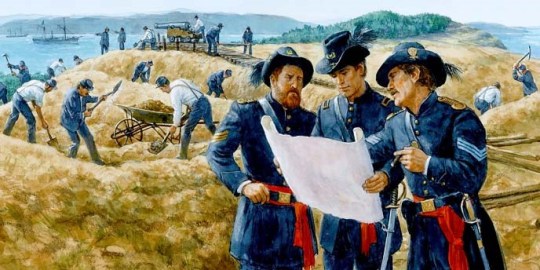
This Day in History: The Pig War
On this day in 1859, an American farmer shoots a pig. The incident nearly sparks open warfare between the United Kingdom and the United States. The conflict that followed has come to be known as the “Pig War.”
“The killing of the pig was the spark that almost set aflame an all-out war between Britain and the United States on the northwest coast of North America,” historian Rosemary Neering explains. “But the standoff on San Juan Island could have been the Sheep War, or the Customs Inspector War, or the You’re Too Damned Arrogant War . . . . [The pig was] one of those small incidents that have much larger repercussions.”
Tensions had been building for some time as both American and British Canadian pioneers sought to claim the thriving marine lands near the northwestern tip of modern-day Washington State. The Oregon Treaty of 1846 was supposed to resolve boundaries issues between the two countries—except it didn’t.
The treaty set the boundary at the 49th parallel from the Rocky Mountains to the sea. Once over water, the boundary was to continue westward “to the middle of the channel which separates the continent from Vancouver’s Island.” Unfortunately, “the middle of the channel” was a flawed description: It could refer either to Haro Strait or to Rosario Strait. One interpretation gave Britain claim to San Juan Island. The other gave the island to the United States.
The story continues here: https://www.taraross.com/post/tdih-pig-war
#tdih#otd#this day in history#history#history blog#America#washington state#today i learned#fact of the day#sharethehistory
2 notes
·
View notes
Text

On this day in 1859, an American farmer shoots a pig. The incident nearly sparks open warfare between the United Kingdom and the United States. The conflict that followed has come to be known as the “Pig War.”
“The killing of the pig was the spark that almost set aflame an all-out war between Britain and the United States on the northwest coast of North America,” historian Rosemary Neering explains. “But the standoff on San Juan Island could have been the Sheep War, or the Customs Inspector War, or the You’re Too Damned Arrogant War . . . . [The pig was] one of those small incidents that have much larger repercussions.”
Tensions had been building for some time as both American and British Canadian pioneers sought to claim the thriving marine lands near the northwestern tip of modern-day Washington State. The Oregon Treaty of 1846 was supposed to resolve boundaries issues between the two countries—except it didn’t.
The treaty set the boundary at the 49th parallel from the Rocky Mountains to the sea. Once over water, the boundary was to continue westward “to the middle of the channel which separates the continent from Vancouver’s Island.” Unfortunately, “the middle of the channel” was a flawed description: It could refer either to Haro Strait or to Rosario Strait. One interpretation gave Britain claim to San Juan Island. The other gave the island to the United States.
Uncertainty hung over the area for years. A British company had thousands of sheep grazing on the island, but American settlers were there, too.
Matters came to a head on June 15, 1859, when American farmer Lyman Cutlar found a pig rooting in his garden. The pig had “been at several times a great annoyance,” he said. He shot the pig, which turned out to be owned by a local British man, Charles Griffin.
As the story goes, Griffin confronted Cutlar, who protested that the pig was eating his potatoes. Griffin is said to have responded: “Rubbish. It’s up to you to keep your potatoes out of my pig!” Whether or not that exact exchange happened, Cutlar offered reimbursement. It was refused, and Cutlar was threatened with arrest.
Cutlar had no intention of being arrested, and he sought military protection from Brig. Gen. William Harney, of the Department of Oregon.
American soldiers were dispatched to the island, so the British responded with warships and Royal Marines. The two sides faced off against each other, occasionally upping the ante with new reinforcements or with military drills. Matters threatened to get ugly.
The situation had spiraled out of control, leaving officials in D.C. shocked. General Winfield Scott was dispatched to handle the problem, but it was October before he arrived. Nevertheless, Scott helped to calm the situation, as did Rear Adm. R. Lambert Baynes, commander of British naval forces in the region. Baynes had already expressed his horror at involving “two great nations in a war over a squabble about a pig.”
Ultimately, a joint military occupation of the island was agreed to, and each side withdrew most of their reinforcements.
Would you believe the joint occupation continued for more than a decade? Finally, the two countries submitted to international arbitration by Germany’s Kaiser Wilhelm I. That arbitration would ultimately rule in favor of Americans, and the 1872 ruling made San Juan Island part of the United States.
At least reportedly, the America-friendly ruling may have occurred because Americans remembered to send a negotiator who spoke German.
“Peace had finally come to the 49th parallel,” a National Park Service website concludes, “and San Juan Island would be long remembered for the ‘war’ in which the only casualty was a pig.”
---------------------------
If you enjoy these history posts, please see my note below. :)
Gentle reminder: History posts are copyright © 2013-2022 by Tara Ross. I appreciate it when you use the shar e feature instead of cutting/pasting.
#TDIH #OTD #history #liberty #freedom #ShareTheHistory
0 notes
Text

Kayaks under an early moonlight.
181 notes
·
View notes
Text
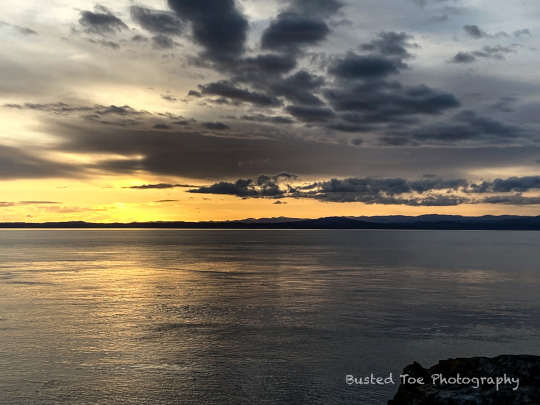
Sunset over Vancouver Island
#original photographers#photographers on tumblr#travel photography#skyphotography#vancouver island#haro strait#sky beauty#sky aesthetic#pnw#pnwonderland#pnwoutdoors
12 notes
·
View notes
Photo

Snowy Scene Surrounding the Salish Sea While the people of the Pacific Northwest were waking up to freshly fallen snow, an astronaut photographed this sunrise view of the state of Washington (United States) and the province of British Columbia (Canada). Cities, towns, and islands around the Salish Sea were blanketed in snow. Clouds and mountain peaks were illuminated by the rising Sun’s warm hues. Winter had officially arrived that week in the Pacific Northwest, with temperatures in some areas dipping to 17° Fahrenheit (-8.3° Celsius) and setting new record lows. The blast of cold and snow followed several rainy fall months. In the photo, various hues of grey and white provide an outline for the rivers, city grid structures, and coastlines. The Olympic and Coast Mountains bracket the urbanized area, with darker mountain valleys standing out against the snow. Haro Strait acts as a boundary between Washington’s San Juan Islands and the mostly cloud-covered Vancouver Island of Canada. This major shipping channel connects the Strait of Georgia and Strait of Juan de Fuca, both of which are part of the Salish Sea. Puget Sound leads south to the Seattle area (just out of the frame). These water bodies help support local and international economies by providing trading access for various goods and tourist attractions such as whale watching. Astronaut photograph ISS066-E-98996 was acquired on December 29, 2021, with a Nikon D5 digital camera using a focal length of 78 millimeters. It is provided by the ISS Crew Earth Observations Facility and the Earth Science and Remote Sensing Unit, Johnson Space Center. The image was taken by a member of the Expedition 66 crew. The image has been cropped and enhanced to improve contrast, and lens artifacts have been removed. The International Space Station Program supports the laboratory as part of the ISS National Lab to help astronauts take pictures of Earth that will be of the greatest value to scientists and the public, and to make those images freely available on the Internet. Additional images taken by astronauts and cosmonauts can be viewed at the NASA/JSC Gateway to Astronaut Photography of Earth. Caption by Sara Schmidt, GeoControl Systems, JETS Contract at NASA-JSC.
2 notes
·
View notes
Photo
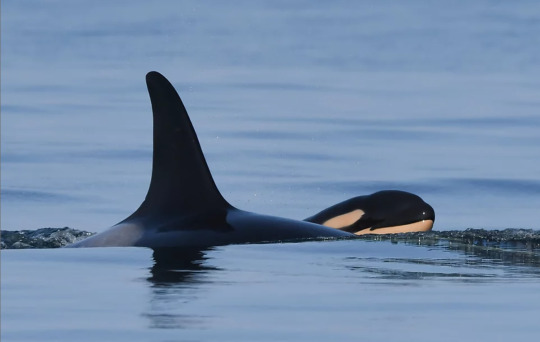
A brand new calf in J pod!
Center For Whale Research - September 6, 2020
On Saturday, September 5, 2020, J pod was reported near the ODAS buoy off Dungeness Spit in the eastern Strait of Juan de Fuca in US waters. Another large group of the endangered Southern Resident killer whales was a few miles away near Race Rocks in Canadian waters swimming toward them. Hooray! At last, we might encounter a ‘superpod’ aggregation of J, K, and L pod whales in the inshore waters of the Salish Sea for the first time this year. So we launched three boats with researchers (two from San Juan Island and one from Victoria) to photo-identify every individual for a population census. Usually, we have an accurate census of these charismatic Pacific Northwest ‘residents’ by July 1 each year. But this year, the salmon spawning migrations to the Fraser River have been so poor that the whales that must eat these salmon to survive have rarely come into what used to be their core summer habitat. A few small groups of these critically endangered whales have ventured inshore in July, and J pod in its entirety came to San Juan Island on September 1. J pod has remained in the general area since then; but, the last time we had some members from all pods was on January 25!
We have had comprehensive encounters with J pod in Haro Strait on September 1 and 3, 2020, at which times we monitored pregnant females J35 and J41 very carefully and saw that they had not yet given birth. On September 5, we followed up on a report from one of the PWWA whalewatchers that a very small calf was seen. Our researchers, Dave Ellifrit and Katie Jones, accompanied by guest veterinarian Dr. Sarah Bahan, quickly identified the mother as J35, Tahlequah. She made world news in the summer of 2018 when she carried her dead calf on her head for 17 days while the pod traveled about 1,000 miles around the Salish Sea on what we termed a “Tour of Grief.” She was still capable of producing a live calf after an approximate eighteen-month gestation! Hooray! Her new calf appeared healthy and precocious, swimming vigorously alongside its mother in its second day of free-swimming life. We know that it was not born today because its dorsal fin was upright, and we know that it takes a day or two to straighten after being bent over in the womb, so we assign its birthday as September 4, 2020. (Ergo gestation commenced in February 2019). Tahlequah was mostly separate from the other whales and being very evasive as she crossed the border into Canada, so we ended our encounter with her after a few minutes and wished them well on their way.
We hope this calf is a success story. Regrettably, with the whales having so much nutritional stress in recent years, a large percentage of pregnancies fail, and there is about a 40% mortality for young calves.
With this new calf in J pod, that we designate as J57, the SRKW population now numbers 73, although the official number for July 1 is estimated to be 72. We have to sort through all of the photos to see which whales were alive yesterday, and it follows that they would have been alive on July 1. The July census is used for consistency in comparison with the Northern Resident killer whale (NRKW) population monitored by DFO Canada.
106 notes
·
View notes
Text
Oh, Haro, you didn't know? That some magi are in such dire straits, they resort to selling their mana-rich semen for a few easy bucks?
9 notes
·
View notes
Text
Date: 21-Aug-19
Sequence: 1
Encounter Number: 54
Enc Start Time: 18:20
Enc End Time: 19:40
Vessel: Orcinus
Observers: Dave Ellifrit, Michael Weiss
Pods or ecotype: J and L pods
Location: Haro Strait
Begin Lat/Long: 48 28.00/123 07.00
End Lat/Long: 48 34.10/123 12. 04
Encounter Summary:
Whale reports had been filing in for most of an extremely gray and rainy Wednesday. Most of J pod was heading south from Pt. Roberts and the J16s, Ks, and Ls had been coming in from Sooke since the early morning. There were also several groups of transients scattered about the central Salish Sea. The rain just about stopped by 1430 and we made an attempt to encounter the SRs coming in off the Victoria waterfront. We made it out into the middle of Haro Strait but a breeze had now picked up and it looked really, really wet where the whales probably were so we turned around and headed back home.
By about 1730, the sky had cleared up and the water had calmed down so Dave and Michael made another attempt to encounter the Ks and Ls. Lodie had reported whales off Eagle Point and others were reported to be still coming in at Middle Bank. We left Snug Harbor at 1800 and saw our first whales at 1820 near Kanaka Bay. We caught a glimpse of L47 and L115 milling before they disappeared and we moved on farther south. At the south end of False Bay, we found L103 and L123 who were heading south into deteriorating sea conditions. Due to reports of a wind line heading north from the south end of the island and 2-3 foot roll coming in from the west, we decided it would probably be a good idea to be heading home so we headed back north. We found L82 and L116 heading south off Pile Point, got a couple of quick pictures, and kept heading north.
We found the southbound J pod whales at 1915 less than a mile south of Kellett Bluff off the mouth of Mitchell Bay and spread out across Haro Strait. We ended the encounter at 1940 at the south end of Mitchell Bay with J pod still heading south. Unfortunately, the SRs left the area that night and were seen the next morning near Sheringham Point heading west again.
15 notes
·
View notes
Photo

❄️Happy December!🌊 from @pnwprotectors With the sun setting on another month, it's time for a check-in on Southern Resident Orcas and Bigg's/Transient Orca visits to the Salish Sea throughout the month of November. The Southern Resident Orcas were present in November more than any other month this year, and it was also the first month of the year where they were present more days than Bigg's Transient Orcas. The Southern Resident Orcas spent 15 of the 21 days present within the waters of the Puget Sound. With our shorter days this time of year, night falls fast so even though we didn't see the Southern Resident Orcas, they were audible on the hydrophones in the Haro Strait after dark. 🌙 We believe the absence of the Southern Resident Orcas in what used to be their peak during spring and summer season has to do with the declines of regional Chinook salmon runs, particularly on the Fraser River. Fall Chinook runs and chum salmon runs have been stronger, which likely explains the shift we're seeing to more resident killer whales here later in the year.🐟 Photograph of J56 Tofino alongside mom J31 Tsuchi with J47 Notch in the background. Words and images by Monika Wieland Shields @orcawatcher @orcabehavior 🌊🌊🌊🌊🌊 #srkw #orca #salishsea #weprotectwhatwelove #breachthedams #notransmountainpipeline #biggsarethebalance #nofishnoblackfish #getfishfarmsout #racingextinction #extinctionisforever #extinctionrebellion https://www.instagram.com/p/B5lNQSUDcOz/?igshid=mi6q2n633pzi
#srkw#orca#salishsea#weprotectwhatwelove#breachthedams#notransmountainpipeline#biggsarethebalance#nofishnoblackfish#getfishfarmsout#racingextinction#extinctionisforever#extinctionrebellion
3 notes
·
View notes
Text
FRIDAY HARBOR, Wash | Orca back to feeding, frolicking after carrying dead calf
New Post has been published on https://is.gd/47wwjx
FRIDAY HARBOR, Wash | Orca back to feeding, frolicking after carrying dead calf
FRIDAY HARBOR, Wash — Researchers say an endangered killer whale that drew international attention as she carried her dead calf on her head for more than two weeks is finally back to feeding and frolicking with her pod.
The Center for Whale Research in Washington state says it watched the orca, known as J35, chase a school of salmon in Haro Strait west of San Juan Island on Saturday afternoon.
The whales have been struggling because of a lack of salmon, and J35’s calf died soon after birth on July 24. The mother carried the baby on her head for at least 17 days, in an image of grief that struck an emotional chord worldwide.
She finally abandoned the carcass as it decomposed.
Center for Whale Research founder Ken Balcomb says he is immensely relieved to see J35 returning to typical behavior.
By Associated Press
#back feeding#carrying dead calf#drew international#FRIDAY HARBOR#frolicking after#Haro Strait#international attention#Orca back#TodayNews#Wash#Whale Research
0 notes
Photo

Watching the sunrise over the Haro Straits. About to head back. (at The Sidney Pier Hotel & Spa) https://www.instagram.com/p/B3KbPl6pYee/?igshid=1nfeto0tbcoxp
1 note
·
View note
Text

Sunset across Haro Strait over Vancouver Island
#original photographers#photographers on tumblr#travel photography#skyphotography#sunset photography#vancouver island#san juan island#haro strait#iphone11#artists on tumblr#pacific northwest
10 notes
·
View notes
Text
September 6, 2021: J Pod- Haro Strait
Double Spyhop

J22 Oreo
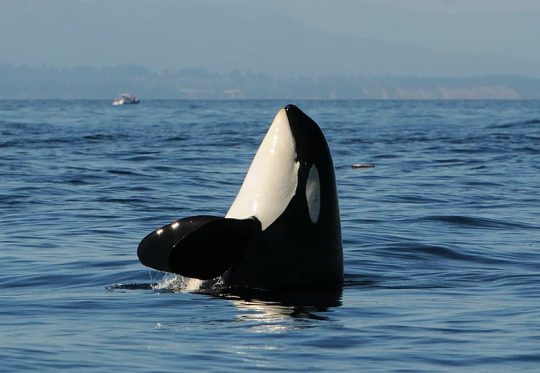
J35 Tahlequah


J44 Moby and J47 Notch

J57 Phoenix and J53 Kiki

J51 Nova aerial scan and J42 Echo
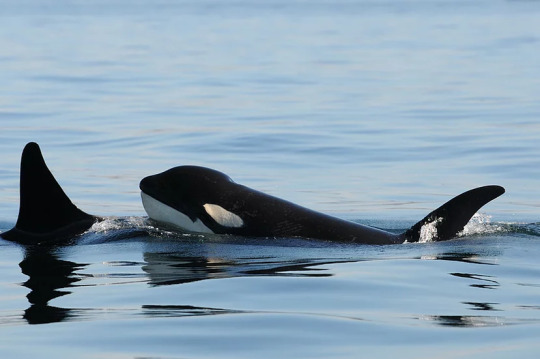
J44 Moby and J49 T’ilem I’nges
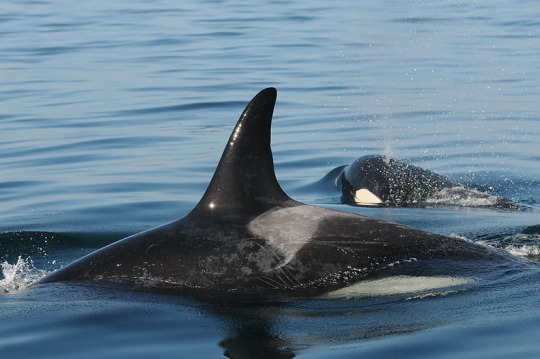
J44 Moby

J47 Notch

Photo Credit to the Center for Whale Research Encounter #64 - Sept 6, 2021
#J22#J22 Oreo#J35#J35 Tahlequah#J44#J44 Moby#J47#J47 Notch#J57#J57 Phoenix#J53#J53 Kiki#J51 Nova#J51#J42#J42 Echo#J49#J49 T'ilem I'nges#southern resident killer whales#southern resident orcas#southern resident community#srkw#J Pod
29 notes
·
View notes